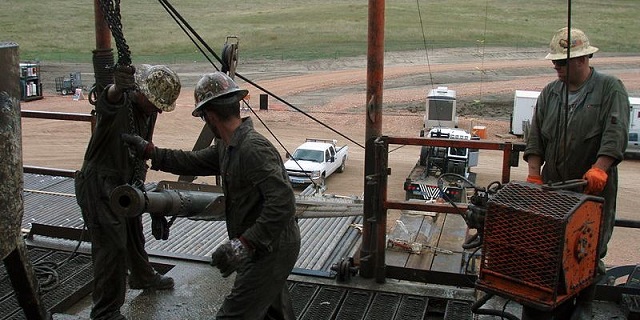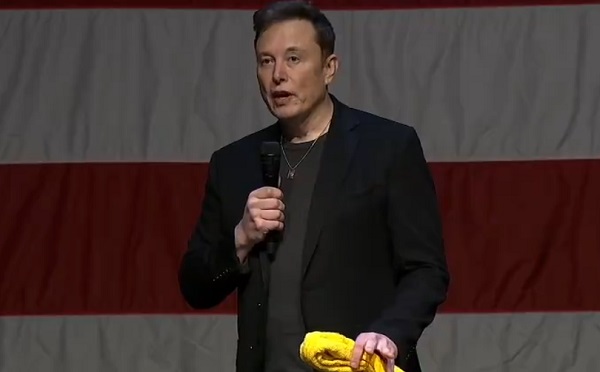Energy
Government policies diminish Alberta in eyes of investors

From the Fraser Institute
By Julio Mejía and Tegan Hill
Canada’s economy has stagnated, with a “mild to moderate” recession expected this year. Alberta can help Canada through this economic growth crisis by reaping the benefits of a strong commodity market. But for this to happen, the federal and provincial governments must eliminate damaging policies that make Alberta a less attractive place to invest.
Every year, the Fraser Institute surveys senior executives in the oil and gas industry to determine what jurisdictions in Canada and the United States are attractive—or unattractive—to investment based on policy factors. According to the latest results, red tape and high taxes are dampening the investment climate in the province’s energy sector.
Consider the difference between Alberta and two large U.S. energy jurisdictions—Wyoming and Texas. According to the survey, oil and gas investors are particularly wary of environmental regulations in Alberta with 50 per cent of survey respondents indicating that “stability, consistency and timeliness of environmental regulatory process” scared away investment compared to 14 per cent in Wyoming and only 11 per cent in Texas.
Investors also suggest that the U.S. regulatory environment offers greater certainty and predictability compared to Alberta. For example, 42 per cent of respondents indicated that “uncertainty regarding the administration, interpretation, stability, or enforcement of existing regulations” is a deterrent to investment in Alberta, compared to only 9 per cent in Wyoming and 13 per cent in Texas. Similarly, 43 per cent of respondents indicated that the cost of regulatory compliance was a deterrent to investment in Alberta compared to just 9 per cent for Wyoming and 19 per cent for Texas.
And there’s more—41 per cent of respondents for Alberta indicated that taxation deters investment compared to only 21 per cent for Wyoming and 14 per cent for Texas. Overall, Wyoming was more attractive than Alberta in 14 out of 16 policy factors assessed by the survey and Texas was more attractive in 11 out of 16.
Indeed, Canadian provinces are generally less attractive for oil and gas investment compared to U.S. states. This should come as no surprise—Trudeau government policies have created Canada’s poor investment climate. Consider federal Bill C-69, which imposes complex, uncertain and onerous review requirements on major energy projects. While this bill was declared unconstitutional, uncertainty remains until new legislation is introduced. During the COP28 conference in Dubai last December, the Trudeau government also announced its draft framework to cap oil and gas sector greenhouse gas emissions, adding uncertainty for investors due to the lack of details. These are just a few of the major regulations imposed on the energy industry in recent years.
As a result of these uncertain and onerous regulations, the energy sector has struggled to complete projects and reach markets overseas. Not surprisingly, capital investment in Alberta’s oil and gas sector plummeted from $58.1 billion (in 2014) to $26.0 billion in 2023.
The oil and gas sector is one of the country’s largest industries with a major influence on economic growth. Alberta can play a key role in helping Canada overcome the current economic challenges but the federal and provincial governments must pay attention to investor concerns and establish a more competitive regulatory and fiscal environment to facilitate investment in the province’s energy sector—for the benefit of all Canadians.
Authors:
Alberta
REPORT: Alberta municipalities hit with $37 million carbon tax tab in 2023

Grande Prairie. Getty Images photo
From the Canadian Energy Centre
Federal cash grab driving costs for local governments, driving up property taxes
New data shows the painful economic impact of the federal carbon tax on municipalities.
Municipalities in Alberta paid out more than $37 million in federal carbon taxes in 2023, based on a recent survey commissioned by Alberta Municipal Affairs, with data provided to the Canadian Energy Centre.
About $760,000 of that came from the City of Grande Prairie. In a statement, Mayor Jackie Clayton said “if the carbon tax were removed, City property taxes could be reduced by 0.6 per cent, providing direct financial relief to residents and businesses in Grande Prairie.”
Conducted in October, the survey asked municipal districts, towns and cities in Alberta to disclose the amount of carbon tax paid out for the heating and electrifying of municipal assets and fuel for fleet vehicles.
With these funds, Alberta municipalities could have hired 7,789 high school students at $15 per hour last year with the amount paid to Ottawa.
The cost on municipalities includes:
Lloydminster: $422,248
Calgary: $1,230,300 (estimate)
Medicine Hat: $876,237
Lethbridge: $1,398,000 (estimate)
Grande Prairie: $757,562
Crowsnest Pass: $71,100
Red Deer: $1,495,945
Bonnyville: $19,484
Hinton: $66,829
Several municipalities also noted substantial indirect costs from the carbon tax, including higher rates from vendors that serve the municipality – like gravel truck drivers and road repair providers – passing increased fuel prices onto local governments.
The rising price for materials and goods like traffic lights, steel, lumber and cement, due to higher transportation costs are also hitting the bottom line for local governments.
The City of Grande Prairie paid out $89 million in goods and services in 2023, and the indirect costs of the carbon tax “have had an inflationary impact on those expenses” in addition to the direct costs of the tax.
In her press conference announcing Alberta’s challenge to the federal carbon tax on Oct. 29, 2024, Premier Danielle Smith addressed the pressures the carbon tax places on municipal bottom lines.
“In 2023 alone, the City of Calgary could have hired an additional 112 police officers or firefighters for the amount they sent to Ottawa for the carbon tax,” she said.
In a statement issued on Oct. 7, 2024, Ontario Conservative MP Ryan Williams, shadow minister for international trade, said this issue is nationwide.
“In Belleville, Ontario, the impact of the carbon tax is particularly notable. The city faces an extra $410,000 annually in costs – a burden that directly translates to an increase of 0.37 per cent on residents’ property tax bills.”
There is no rebate yet provided on retail carbon pricing for towns, cities and counties.
In October, the council in Belleville passed a motion asking the federal government to return in full all carbon taxes paid by municipalities in Canada.
The unaltered reproduction of this content is free of charge with attribution to the Canadian Energy Centre.
Energy
Global fossil fuel use rising despite UN proclamations

From the Fraser Institute
By Julio Mejía and Elmira Aliakbari
Major energy transitions are slow and take centuries, not decades… the first global energy transition—from traditional biomass fuels (including wood and charcoal) to fossil fuels—started more than two centuries ago and remains incomplete. Nearly three billion people in the developing world still depend on charcoal, straw and dried dung for cooking and heating, accounting for about 7 per cent of the world’s energy supply (as of 2020).
At the Conference of the Parties (COP29) in Azerbaijan, António Guterres, the United Nations Secretary-General, last week called for a global net-zero carbon footprint by 2050, which requires a “fossil fuel phase-out” and “deep decarbonization across the entire value chain.”
Yet despite the trillions of dollars already spent globally pursuing this target—and the additional trillions projected as necessary to “end the era of fossil fuels”—the world’s dependence on fossil fuels has remained largely unchanged.
So, how realistic is a “net-zero” emissions world—which means either eliminating fossil fuel generation or offsetting carbon emissions with activities such as planting trees—by 2050?
The journey began in 1995 when the UN hosted the first COP conference in Berlin, launching a global effort to drive energy transition and decarbonization. That year, global investment in renewable energy reached US$7 billion, according to some estimates. Since then, an extraordinary amount of money and resources have been allocated to the transition away from fossil fuels.
According to the International Energy Agency, between 2015 and 2023 alone, governments and industry worldwide spent US$12.3 trillion (inflation-adjusted) on clean energy. For context, that’s over six times the value of the entire Canadian economy in 2023.
Despite this spending, between 1995 and 2023, global fossil fuel consumption increased by 62 per cent, with oil consumption rising by 38 per cent, coal by 66 per cent and natural gas by 90 per cent.
And during that same 28-year period, despite the trillions spent on energy alternatives, the share of global energy provided by fossil fuels declined by only four percentage points, from 85.6 per cent to 81.5 per cent.
This should come as no surprise. Major energy transitions are slow and take centuries, not decades. According to a recent study by renowned scholar Vaclav Smil, the first global energy transition—from traditional biomass fuels (including wood and charcoal) to fossil fuels—started more than two centuries ago and remains incomplete. Nearly three billion people in the developing world still depend on charcoal, straw and dried dung for cooking and heating, accounting for about 7 per cent of the world’s energy supply (as of 2020).
Moreover, coal only surpassed wood as the main energy source worldwide around 1900. It took more than 150 years from oil’s first commercial extraction for oil to reach 25 per cent of all fossil fuels consumed worldwide. Natural gas didn’t reach this threshold until the end of the 20th century, after 130 years of industry development.
Now, consider the current push by governments to force an energy transition via regulation and spending. In Canada, the Trudeau government has set a target to fully decarbonize electricity generation by 2035 so all electricity is derived from renewable power sources such as wind and solar. But merely replacing Canada’s existing fossil fuel-based electricity with clean energy sources within the next decade would require building the equivalent of 23 major hydro projects (like British Columbia’s Site C) or 2.3 large-scale nuclear power plants (like Ontario’s Bruce Power). The planning and construction of significant electricity generation infrastructure in Canada is a complex and time-consuming process, often plagued by delays, regulatory hurdles and substantial cost overruns.
The Site C project took around 43 years from initial feasibility studies in 1971 to securing environmental certification in 2014. Construction began on the Peace River in northern B.C. in 2015, with completion expected in 2025 at a cost of at least $16 billion. Similarly, Ontario’s Bruce Power plant took nearly two decades to complete, with billions in cost overruns. Given these immense practical, financial and regulatory challenges, achieving the government’s 2035 target is highly improbable.
As politicians gather at high-profile conferences and set ambitious targets for a swift energy transition, global reliance on fossil fuels has continued to increase. As things stand, achieving net-zero by 2050 appears neither realistic nor feasible.
Authors:
-

 Brownstone Institute22 hours ago
Brownstone Institute22 hours agoThe Most Devastating Report So Far
-

 Economy1 day ago
Economy1 day agoCOP 29 leaders demand over a $1 trillion a year in climate reparations from ‘wealthy’ nations. They don’t deserve a nickel.
-

 Censorship Industrial Complex1 day ago
Censorship Industrial Complex1 day agoAnother Mass Grave?
-

 ESG9 hours ago
ESG9 hours agoCan’t afford Rent? Groceries for your kids? Trudeau says suck it up and pay the tax!
-

 Alberta1 day ago
Alberta1 day agoMAiD In Alberta: Province surveying Albertans about assisted suicide policies
-

 Energy1 day ago
Energy1 day agoOttawa’s proposed emission cap lacks any solid scientific or economic rationale
-

 Alberta1 day ago
Alberta1 day agoOn gender, Alberta is following the science
-

 International10 hours ago
International10 hours agoElon Musk praises families on X: ‘We should teach fear of childlessness,’ not pregnancy





